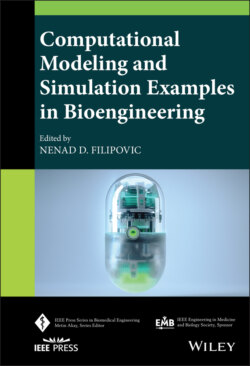Читать книгу Computational Modeling and Simulation Examples in Bioengineering - Группа авторов - Страница 24
1.7.4 FSI Interaction
ОглавлениеIn many models of cardiovascular examples where deformation of blood vessel walls was taken into account, we can implement the loose coupling approach for the FSI [113–116]. The overall algorithm consists of the following steps:
1 For the current geometry of the blood vessel, determine blood flow (with Arbitrary Lagrangian–Eulerian (ALE) formulation). The boundary conditions for the fluid are wall velocities at the common blood–blood vessel surface.
2 Calculate the loads, which act on the walls from fluid domain (blood).
3 Determine deformation of the walls taking the current loads from the fluid domain (blood).
4 Check for the overall convergence which includes fluid and solid domain. If convergence is reached, go to the next time step. Otherwise go to step (1).
5 Update blood domain geometry and velocities at the common solid–fluid boundary for the new calculation of the fluid domain. In case of large wall displacements, update the finite element mesh for the fluid domain. Go to step (1).
The shear stress and drag force distribution have been presented in Figures 1.2 and 1.3 for two different patients for proximal and distal AAA.
Figure 1.2 (a) Shear stress distribution. (b) Drag force distribution.
Figure 1.3 (a) Shear stress distribution. (b) Drag force distribution.
